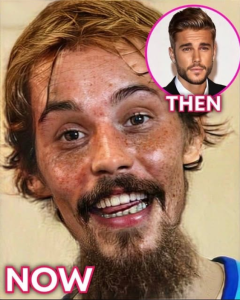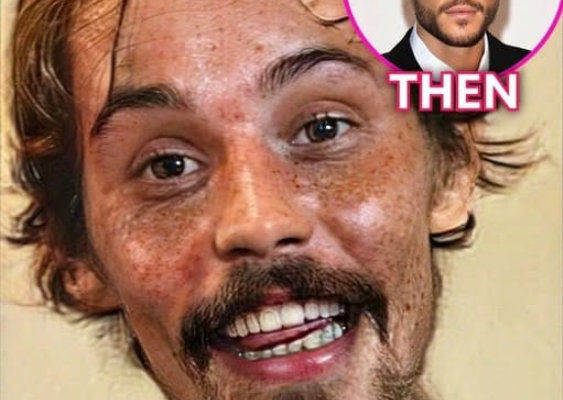
🎙️ The Public Confession: Justin Bieber’s Admission of Testing Positive for Health and Substance Challenges
Justin Bieber has publicly disclosed testing positive for several major medical and substance-related issues throughout his career, often using these revelations to address public speculation about his appearance and behavior. The two most significant and widely discussed admissions fall into two distinct categories: substance use earlier in his career and a serious neurological virus in his later career.
The core admissions revolve around:
-
Marijuana and Xanax (Alprazolam): Confirmed by a toxicology report following his 2014 Miami arrest, which Bieber later openly discussed in the context of his battle with addiction.
-
Lyme Disease and Chronic Mono (Epstein-Barr Virus): Revealed in 2020 as the underlying medical cause for a period of poor health and public scrutiny.
-
Ramsay Hunt Syndrome (RHS): Disclosed in 2022 as the cause of partial facial paralysis, forcing him to cancel his world tour.
This 1,000-word analysis focuses on these key admissions, examining the context, the medical and personal impact, and the resulting public awareness.
1. The Early Admission: Marijuana and Xanax (2014)
The initial, involuntary admission of a positive test came in January 2014. Following his arrest in Miami Beach, Florida, for driving under the influence (DUI) and drag racing, a toxicology report confirmed that Justin Bieber had tested positive for Marijuana (THC) and Alprazolam, the primary ingredient in the anti-anxiety prescription drug Xanax, in his system.
Context and Confession:
While the toxicology report confirmed the results, Bieber himself later made a far more extensive admission regarding his substance use and addiction in documentaries and interviews, framing the positive tests as part of a much larger, darker struggle.
He spoke candidly about:
-
Early Onset: Starting to smoke marijuana at a young age (around 12 or 13) to cope with the immense pressure and isolation of his rapid ascent to fame.
-
Escalation: Progressing to other substances, including the misuse of prescription pills like Xanax (which he initially took to cope with anxiety and “shame”), ‘Lean’ (a mix of codeine cough syrup and soda), MDMA, and psychedelic mushrooms.
-
The Depth of Addiction: Admitting that the drug use became so severe that members of his security team would check his pulse at night to ensure he was still alive.
The admission that he had repeatedly tested positive for and was addicted to these substances was a watershed moment, fundamentally shifting the public narrative of a “troubled child star” to that of an individual struggling with severe addiction, mental health issues, and the trauma of growing up in the unrelenting public eye. His eventual sobriety and focus on recovery became central to his personal story.
2. The Health Admission: Lyme Disease and Chronic Mono (2020)
Four years after his major public legal issues, Bieber made a significant admission regarding a chronic health battle that had been fueling public speculation about his declining energy and appearance. In January 2020, he announced that he had been officially diagnosed with Lyme disease and a severe case of Chronic Mononucleosis (Chronic Mono), caused by the Epstein-Barr virus.
Context and Medical Impact:
Bieber shared that these illnesses had deeply affected his:
-
Physical Health: Causing extreme fatigue, joint pain, and skin issues.
-
Mental Health: Contributing to mood swings, anxiety, and depression.
-
Brain Function: Leading to ‘brain fog’ and cognitive difficulties that directly impacted his ability to perform and function normally.
His revelation was a direct response to media and public speculation that he was suffering a relapse into substance use, noting the scrutiny he faced from people who “kept saying Justin Bieber looks like sh*t, on meth etc.” He clarified that his symptoms, including his sometimes-disheveled appearance, were manifestations of these serious, often misdiagnosed, chronic conditions.
His public admission not only validated his struggles but also brought significant mainstream attention to the often-complex diagnosis and debilitating symptoms of Lyme disease and chronic mononucleosis, joining other celebrities like Avril Lavigne who have used their platforms to raise awareness.
3. The Neurological Admission: Ramsay Hunt Syndrome (2022)
The most visually shocking admission came in June 2022, when Justin Bieber announced he had been diagnosed with Ramsay Hunt Syndrome (RHS), a rare neurological disorder that caused partial paralysis of his face.
Context and Neurological Impact:
Ramsay Hunt Syndrome is caused by the reactivation of the varicella-zoster virus (the same virus that causes chickenpox and shingles) which attacks the facial nerve near the ear. In a candid video, Bieber confirmed the positive diagnosis and showed the stark physical effects:
-
Facial Paralysis: One side of his face was completely paralyzed; he could not blink one eye, smile on that side, or move his nostril.
-
Forced Tour Cancellation: He was forced to cancel the remainder of his highly anticipated Justice World Tour, explaining to fans that he was “physically, obviously not capable of doing them” and needed time to rest and recover.
This public admission served multiple purposes: it explained his sudden absence from the world stage, it educated the public on a rare condition that few had heard of, and it allowed him to be transparent about his vulnerability. The diagnosis highlighted the ongoing health challenges faced by the star, reinforcing the fact that his body was telling him to “slow down.”
Conclusion: The Evolution of Public Confession
Justin Bieber’s career is marked by several public moments of “testing positive,” revealing an arc from confirmed substance abuse resulting from personal struggle, to a series of physical health crises (Lyme, Chronic Mono, and Ramsay Hunt Syndrome) that severely impacted his well-being.
His willingness to use his platform to discuss not only his addiction but also his battles with chronic, invisible, and rare diseases has profoundly shaped his public image from a troubled celebrity to a major advocate for mental and physical health awareness. Each positive test and subsequent admission has allowed him to redefine his story and redirect public conversation toward the complexities of addiction, trauma, and chronic illness in the spotlight.

